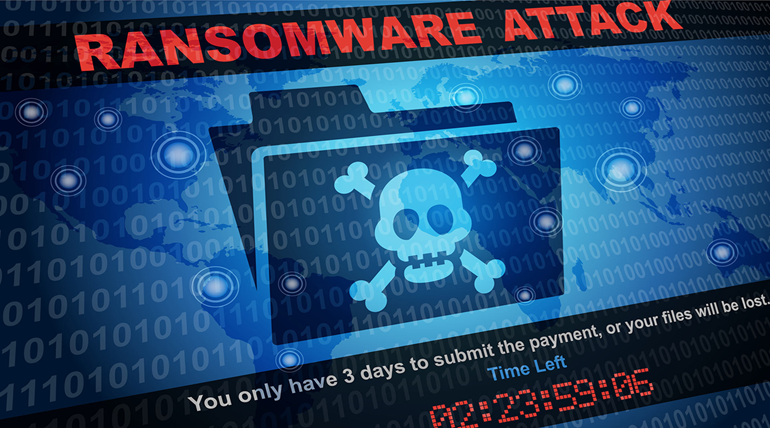Understanding Ransomware: How to Protect Your Business from Cyber Extortion

10 months ago
Understanding Ransomware: How to Protect Your Business from Cyber Extortion
In today’s digital age, ransomware has emerged as one of the most pervasive and damaging cyber threats to businesses of all sizes.
Organizations are increasingly targeted by cybercriminals seeking to encrypt their critical data and demand hefty payments for its release. Understanding ransomware and taking proactive measures to protect your business is essential to avoid financial losses, reputational damage, and operational disruption.
What is Ransomware?
Ransomware is a type of malicious software that encrypts a victim’s files, rendering them inaccessible. Attackers then demand a ransom payment, often in cryptocurrency, in exchange for the decryption key. Some ransomware variants also threaten to leak sensitive data if the ransom is not paid, adding another layer of pressure on businesses.
Types of Ransomware
- Locker Ransomware: It prevents access to basic computer functions but doesn’t encrypt files. It locks the user out of their device entirely.
- Crypto Ransomware: Encrypts specific files or entire systems, leaving data inaccessible until a ransom is paid.
- Double Extortion Ransomware: Combines file encryption with data theft, where attackers threaten to publish stolen information if the ransom is not paid.
- Ransomware-as-a-Service (RaaS): Cybercriminals sell or lease ransomware kits to less-skilled attackers, enabling a wider range of attacks.
The Impact of Ransomware on Businesses
- Financial Losses: Paying ransoms, restoring systems, and recovering from downtime can cost millions.
- Reputational Damage: Customers and partners may lose trust in an organization after a ransomware attack.
- Operational Disruption: Entire systems and services may be taken offline, halting business operations.
- Legal and Regulatory Consequences: Non-compliance with data protection laws due to a breach can result in fines.
How to Protect Your Business from Ransomware
1. Employee Education and Awareness
- Why It Matters: Employees are often the weakest link in cybersecurity. Phishing emails, the primary delivery method for ransomware, rely on human error.
- What to Do:
- Train staff to recognize phishing attempts and suspicious links.
- Conduct regular cybersecurity awareness programs.
2. Regular Data Backups
- Why It Matters: Regular backups ensure that even if your systems are compromised, your critical data can be restored without paying a ransom.
- What to Do:
- Perform automated backups daily.
- Store backups offline or in a secure, separate environment.
- Test backups to ensure data integrity.
3. Maintain Updated Software and Systems
- Why It Matters: Ransomware often exploits vulnerabilities in outdated software.
- What to Do:
- Apply security patches and updates as soon as they are released.
- Use centralized management tools to monitor software updates across the organization.
4. Implement Endpoint Security Solutions
- Why It Matters: Endpoint protection can detect and block ransomware before it takes hold.
- What to Do:
- Use advanced antivirus and anti-malware solutions.
- Employ endpoint detection and response (EDR) systems for real-time monitoring.
5. Apply Network Segmentation
- Why It Matters: Limiting access to sensitive data and systems can prevent an attack’s spread.
- What to Do:
- Segment your network into smaller zones.
- Use access controls to restrict sensitive areas to authorized personnel only.
6. Deploy Multi-Factor Authentication (MFA)
- Why It Matters: MFA adds an extra layer of protection to accounts, even if credentials are compromised.
- What to Do:
- Require MFA for all user accounts, especially those with administrative privileges.
- Use strong authentication methods like app-based or hardware-based tokens.
7. Monitor for Threats
- Why It Matters: Early detection can prevent ransomware from spreading across your network.
- What to Do:
- Set up intrusion detection and prevention systems (IDPS).
- Continuously monitor logs and traffic for unusual activity.
What to Do if Your Business is Attacked
- Disconnect Affected Systems: Isolate infected systems to prevent further spread.
- Contact Cybersecurity Experts: Work with incident response teams or a managed security service provider (MSSP).
- Do Not Pay the Ransom Immediately: Paying does not guarantee data recovery and may encourage future attacks. Explore all other options first.
- Notify Authorities: Report the attack to law enforcement and any applicable regulatory bodies.
- Conduct a Post-Attack Analysis: Identify the root cause of the breach and strengthen your defenses to prevent future attacks.
Conclusion
Ransomware is a growing threat, but businesses can significantly reduce their risk with proactive measures. Employee education, regular backups, updated systems, and robust security tools form the foundation of a strong defense. Remember, cybersecurity is not a one-time effort but an ongoing commitment to safeguarding your data and operations.
By staying vigilant and prepared, your business can withstand and recover from even the most sophisticated ransomware attacks.
Would you like to learn more about implementing specific ransomware defenses? Let us know in the comments.
©everlastcyber





0 Comment